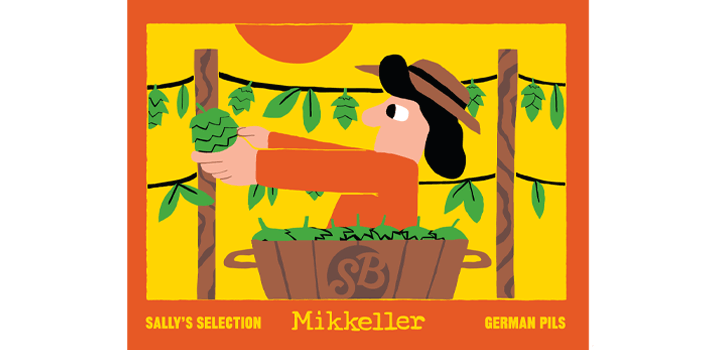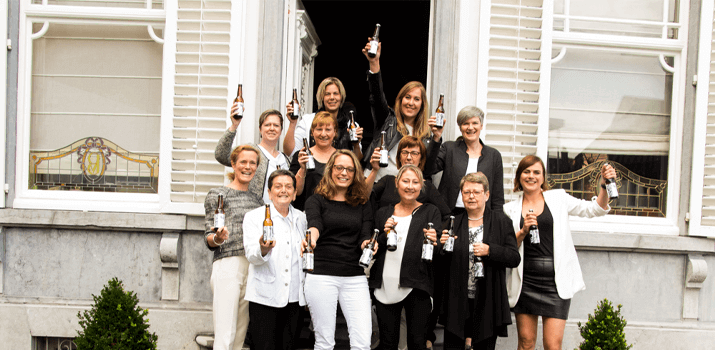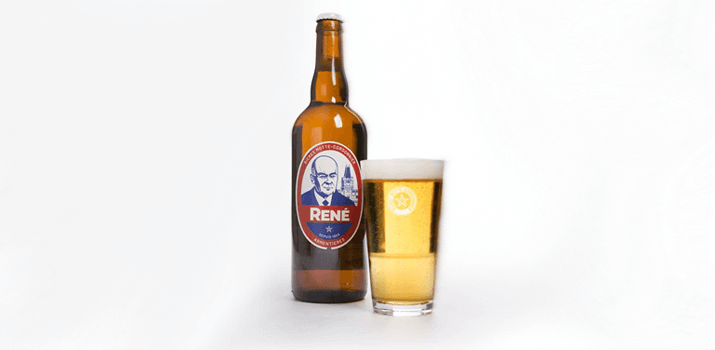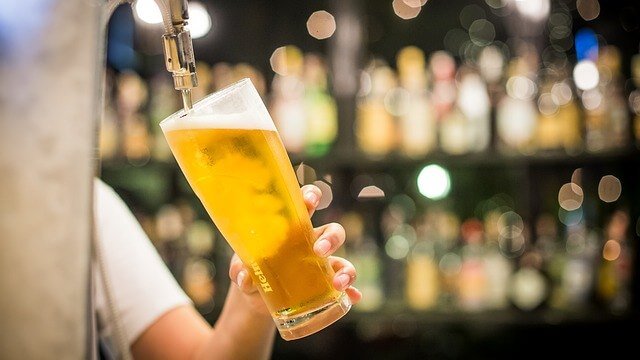Multiple Choice
1.) What's important to do at a beer festival?
A.) Go for 1/3 pints B.) Talk to those pouring your beer
C.) Try something new D.) All of the above
2.) Which is a prominent Belgian beer style?
A.) Saison B.) Bitter
C.) Pilsner D.) IPA
3.) Which country has the highest beer consumption rate in the world?
A.) Germany B.) Belgium
C.) Czech Republic D.) USA
4.) When observing a beer's appearance, what are you considering?
A.) Clarity, colour, head B.) Clean glass, type of glass
C.) Carbonation, finish, body D.) Label, branding, brewery t-shirts
5.) Which beer is generally considered hoppy?
A.) Doppelbock B.) DIPA
C.) Helles D.) Mild
Fill-in-the-Blank
6.) Unhopped beers in 15th century Britain were known as ales.
7.) Which beer is widely considered to be the predecessor to most world lagers? Bohemian Pilsner
8.) Finings not suitable for vegetarians are called isinglass.
9.) Inserting CO2 directly into a kegged beer to form carbonation is a process called force carbonation.
10.) The German purity law, the Reinheitsgebot, says that beer can only be made of these four ingredients: Malt, Hops, Water, Yeast.
True or False
11.) If a keg beer is fobbing over possible reasons are improper temperature and not opening the faucet completely. True
12.) The birthplace of modern craft beer is widely considered to be the UK. False. It is generally considered to be from the US.
13.) A Bohemian Pilsner is generally maltier than a German Pils. True
14.) The work stops at the brewery when dealing with cask ales. False. The publican is in charge of making sure it drops bright and is kept at a proper temperature. Not to mention clean lines at the pub!
15.) Noting viscosity is important when making observations of flavour. False. That's more of a mouthfeel thing but it does add to the overall character of the beer--much like its flavour would!
Identify the Style
We touched on some styles in this unit (we'll get more in depth in later units) but try to identify the style based on the clues below:
16.) Ranking among the world’s strongest beers this rich lager used to sustain German monks during Lenten fasts. They're generally slightly sweet with just enough hops to strike a balance, warming all the way down. Doppelbock
17.) First brewed in 1800's San Francisco using lager yeasts fermented at a higher temperature. The result is a beer with fruity characteristics and an assertive hop bitterness. California Common or Steam Beer, which is trademarked by Anchor Brewing
18.) Dating back to 18th century London this beer is the predecessor to all stouts. Noted for its restrained roasted character and bitterness, it leans to the sweet side, with a significant caramel or toffee character and malty complexity. Porter
19.) Literally “white beer”, this Belgian wheat ale got its name because of its cloudy haze. A smooth mouthfeel and grainy malts meet a dry and spicy Belgian yeast character with notes of coriander and orange. Witbier
20.) One of the most celebrated Belgian Trappist style ales, this beer generally displays a gleaming russet colour and has a complex flavour and aroma: spice, florals, dried fruits and plums. Moderately sweet and medium-full bodied and a dry finish. Dubbel
Style Guide
For the final question, fill in the missing basic style information (in your words) for the following beer (hint: you may have to draw on some of your knowledge from Unit 1):
Style:
Belgian Tripel (Trappist)
Brief History of the Style:
Westmalle is a Trappist brewery widely regarded as the creator of the Belgian tripel style. While the term "tripel" had been used many years prior, it was in 1956 when Westmalle used the term for their style of tripel which has since then been considered the basis of the style.
Style Standards:
The tripel is higher in alcohol than the dubbel but lighter in colour and body. Spicy and fruity with a gentle sweetness and hints of alcohol lead to a dry and mildly bitter finish. The use of Belgian candy sugar lightens the body and also gives a layer of complexity to the flavour and aromas.
Appearance:
Deep golden colour and a large dense head which leaves behind beautiful lacing. The clarity is slightly cloudy.
Aroma:
Classic Belgian yeast aromas of spice and fruit are evident. Some florals, biscuity malts and citrus. Beautiful!
Flavour:
Similar notes as on the nose but accompanied by caramel and some sugary sweetness and moderate bitterness.
Mouthfeel:
Creamy yet lively carbonation lifts up the full body of this ale. Its dry finish leads to a lingering bitterness in the mouth. It's exceptionally drinkable--which makes it a bit dangerous!
Final Thoughts:
The gold standard for Belgian tripels, it's impossible to find fault with this beer. It did essentially define the style, after all. It's gorgeous!
Fermentation:
Ale (top fermenting)
Serving Temperature:
7-10?C
Glassware:
Snifter, chalice, tulip
Storage Temperature:
7-10?C
Max Length of Storage:
Up to two years
Ta Da! You did it! We hope you enjoyed digger a little (ok, a lot) deeper into beer here in Unit 2. We'll see you next week as we head on out to Unit 3 at one of our favourite places: the brewery!





